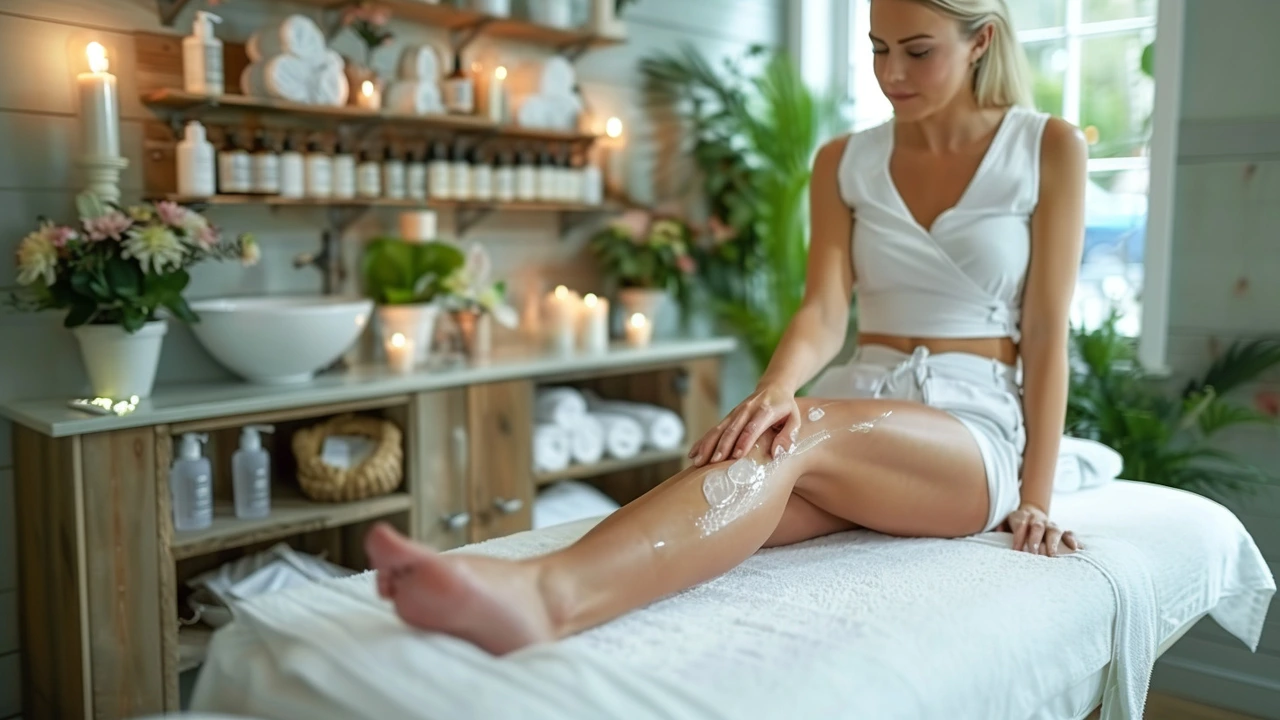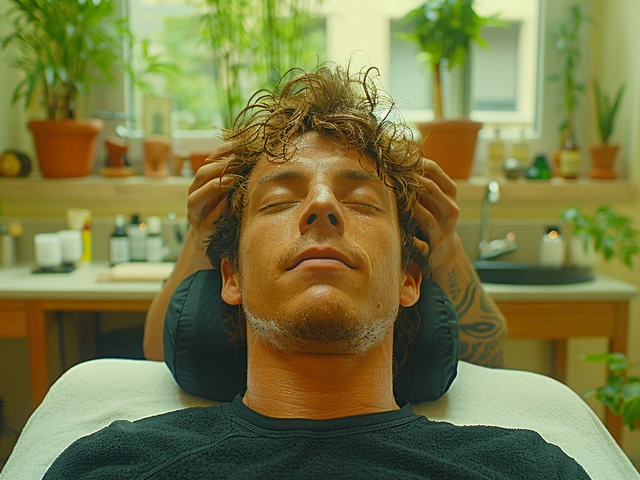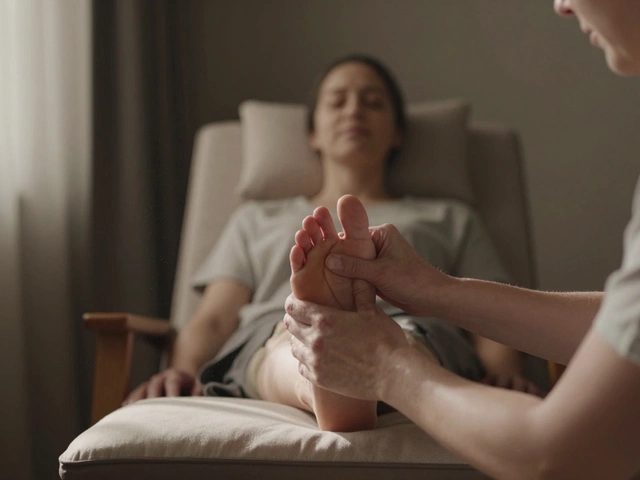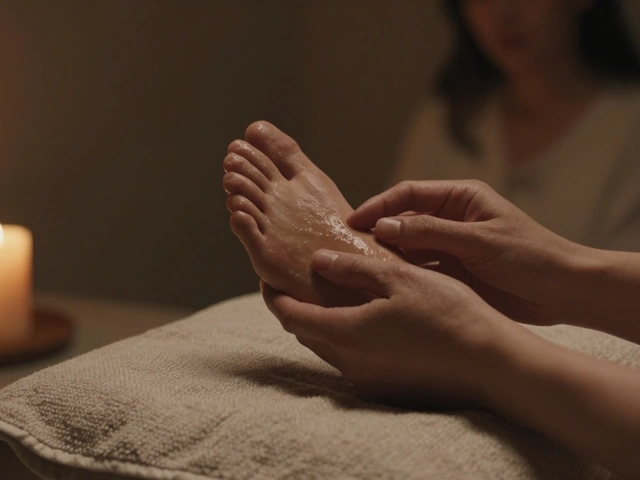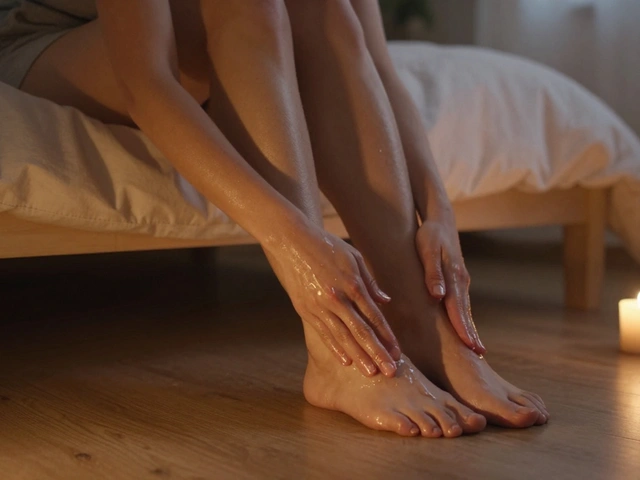Reflexology is an ancient practice rooted in the idea that specific points on the feet, hands, and ears are linked to different organs and systems throughout the body. By applying pressure to these reflex points, practitioners believe they can help alleviate stress, improve circulation, and boost overall well-being.
The idea is quite simple but deeply profound: our feet, as humble as they may seem, hold the key to unlocking a state of relaxation and health. As popular as it is today, reflexology has a rich history that has evolved over the centuries. It has become a go-to therapy for many looking to take a more holistic approach to their health.
If you're new to reflexology, it's not just about pressing random points on your feet. There's a method to this therapeutic practice, with specific techniques and tools designed to maximize benefits. Here, we dive into the basics of reflexology and offer some handy tips on how you can get started with this fascinating form of alternative medicine.
- What is Reflexology?
- History and Origins
- The Benefits of Reflexology
- Techniques and Tools
- How to Get Started
What is Reflexology?
Reflexology is a therapeutic practice that taps into the body’s natural ability to heal itself, focusing on specific pressure points mainly on the feet, but also on the hands and ears. Each of these points is believed to correspond to different organs and systems within the body. By applying pressure to these areas, or reflexes, practitioners aim to alleviate stress, encourage relaxation, and promote overall health. Reflexologists use maps that outline the points associated with various parts of the body, guiding them as they work to stimulate these zones and bring about physiological and psychological benefits.
The underlying theory behind reflexology is rooted in the idea that energy pathways within the body become blocked by stress and tension. Reflexology seeks to clear those blockages, restoring the flow of energy, which in turn supports the body's natural healing processes. This method is non-invasive and is often seen as complementary to conventional medical treatments, not a replacement. For instance, while it can help reduce the discomfort associated with chronic conditions, it is not intended to cure diseases.
Citing a study by the National Institutes of Health, "Reflexology has shown promise in reducing pain, improving symptoms of anxiety, and enhancing quality of life for a range of patients."
Practitioners often emphasize the holistic nature of reflexology, meaning they consider the whole person rather than focusing solely on specific symptoms. They work under the belief that the body operates as a unified system, and issues in one area can impact the entire organism. This holistic approach can be particularly appealing for those seeking to address multiple aspects of their wellbeing simultaneously, rather than dealing with each problem in isolation.
One might wonder why the feet are so central to reflexology. The answer lies in both convenience and connectivity. The feet contain a dense network of nerves, making them highly sensitive and a practical area to treat. The soles of the feet alone contain over 7,000 nerve endings, each linked to various organs and structures within the body. Stimulating these nerve endings can send calming signals throughout the body, potentially easing symptoms in far-reaching areas like the liver, lungs, and even the brain.
Reflexology sessions typically last between 30 to 60 minutes. During a session, you can expect the practitioner to gently stretch and massage the feet, starting with a basic touch to warm up the tissues. They then proceed to apply pressure using their thumbs and fingers in a systematic manner, covering all relevant reflex points. Though it's generally a relaxing experience, some individuals might feel discomfort in particular spots, which could indicate congestion or an energy blockage.
How Reflexology Intersects with Modern Healthcare
Research into reflexology is continually evolving, with many studies exploring its potential benefits. Public interest is also growing, given the increasing number of people seeking holistic and alternative treatments. While more extensive clinical trials are needed to validate reflexology's efficacy comprehensively, preliminary findings and anecdotal evidence suggest it can be a helpful adjunct to traditional medical care. For example, cancer patients have turned to reflexology to help manage side effects of chemotherapy such as nausea and pain.
Moreover, reflexology is accessible to nearly everyone and can be tailored to suit individual needs. This makes it a versatile option for people of all ages, from children seeking relief from minor ailments to elderly individuals looking to enhance their quality of life. Whether you’re aiming to de-stress after a long day or complement your ongoing medical treatments, reflexology offers a pathway to wellness that starts from the ground up.
History and Origins
The roots of reflexology can be traced back thousands of years to ancient Egypt, China, and India. Evidence suggests that early forms of foot therapy were practiced as part of holistic medicine traditions in these ancient cultures. Notably, a pictograph found in the tomb of an Egyptian physician, dating back to around 2330 BC, depicts individuals working on each other's hands and feet, showcasing an early form of this practice.
In ancient China, reflexology is believed to have developed alongside other forms of traditional Chinese medicine, such as acupuncture. The earliest documented use of foot therapy in China is found in The Yellow Emperor's Classic of Internal Medicine, written around 1000 BC. This ancient text discusses the therapeutic benefits of applying pressure to certain points on the feet to enhance overall health and treat various ailments. Similarly, traditional Indian medicine, known as Ayurveda, included foot massages as part of its comprehensive approach to wellness.
The modern history of reflexology began to take shape in the early 20th century, thanks to the efforts of Dr. William H. Fitzgerald, an American ear, nose, and throat specialist. He developed a theory he called "zone therapy," which involved dividing the body into ten longitudinal zones and applying pressure to corresponding points on the feet and hands to alleviate pain and improve function. Dr. Fitzgerald's work laid the foundation for the reflexology we recognize today.
In the 1930s and 1940s, Eunice D. Ingham, a physiotherapist, further refined and popularized Dr. Fitzgerald's theories. She mapped out detailed reflex points on the feet, which she believed corresponded directly to organs and systems within the body. Ingham's pioneering work led to the publication of her influential book, "Stories the Feet Can Tell," in which she documented numerous case studies demonstrating the therapeutic potential of reflexology.
Since then, reflexology has grown significantly in popularity and is now practiced worldwide as a form of alternative medicine. Modern reflexologists build upon the foundational knowledge developed by these early pioneers, continuing to refine techniques and expand the understanding of how stimulating specific points on the feet can promote healing and relaxation.
Interestingly, reflexology has garnered attention not only from holistic health practitioners but also from some members of the scientific community. While reflexology has numerous anecdotal endorsements, scientific research is ongoing to fully understand its mechanisms and efficacy. In some studies, participants have reported significant improvements in pain management, stress reduction, and overall well-being.
"Reflexology operates on the same principles as other complementary therapies. By bringing balance and harmony to the body's systems, it aims to support the body's natural healing processes." — Dr. Gillian Hamsher, Complementary Health Practitioner
Today, reflexology is widely accessible, with practitioners offering their services in wellness centers, spas, and clinics across the globe. Whether you seek it for relaxation, pain relief, or to complement other treatments, reflexology continues to gain recognition as a valuable tool for promoting a healthier, more balanced life.
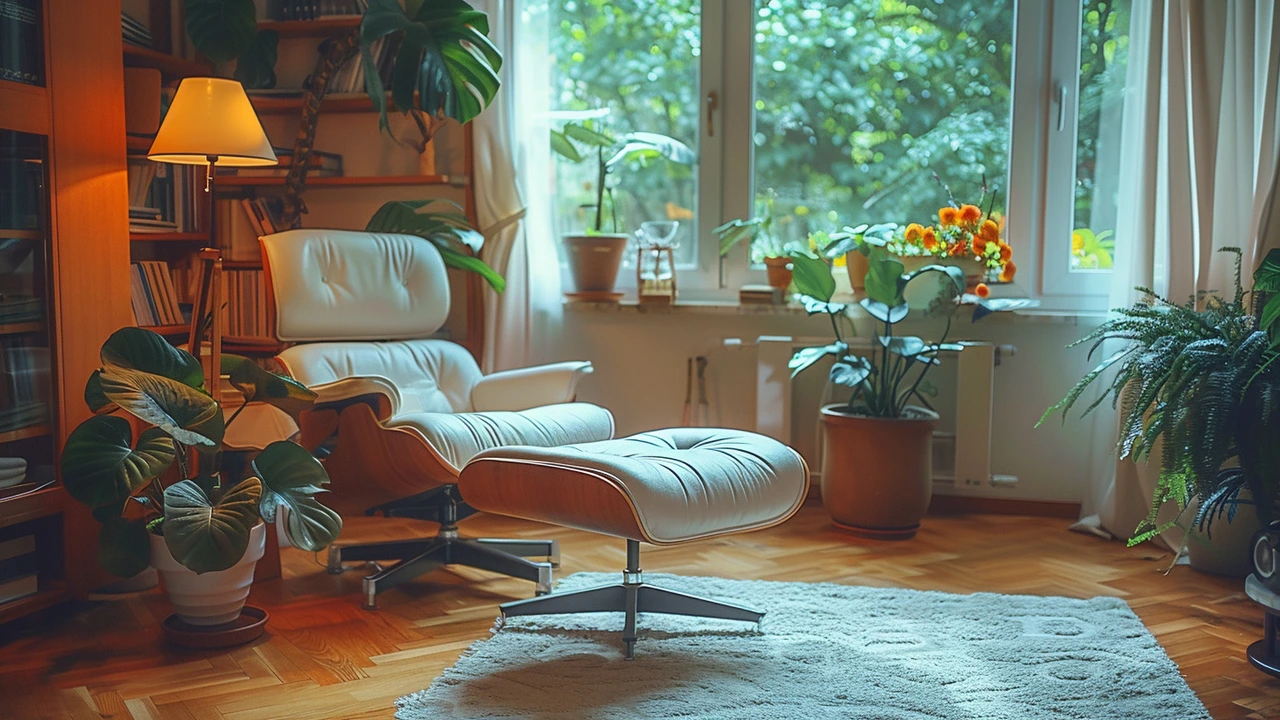
The Benefits of Reflexology
Reflexology, often seen as a gentle art, holds a surprising amount of power when it comes to enhancing one's well-being. One of the most celebrated benefits is its ability to reduce stress. The act of applying pressure to specific points on the feet can trigger a state of relaxation throughout the body, which is crucial for those dealing with daily stressors. When you're relaxed, your body can function more efficiently, promoting better mental and physical health.
Another notable benefit of reflexology is its role in improving circulation. When specific pressure is applied to reflex points, it can help to stimulate blood flow. Better circulation means that more oxygen and nutrients are delivered to vital organs and muscles, aiding in their optimal function. Improved circulation can also assist in the removal of toxins from the body, contributing to a cleaner internal environment.
Interestingly, reflexology has been reported to provide pain relief for various conditions, such as migraines, headaches, and even sinus issues. This can be attributed to the connection between reflex points and the nervous system. By targeting these points, reflexology can help to alleviate tension and reduce discomfort. According to a study published in the Journal of Alternative and Complementary Medicine, patients who received reflexology treatments reported a significant reduction in chronic pain levels.
Reflexology isn't just about foot massages; it's a holistic approach that connects different parts of the body, helping you achieve a balanced state. It's about understanding that our feet are maps that guide us to better health.
Beyond physical benefits, reflexology has also been shown to have a positive impact on mental health. It aids in reducing anxiety and alleviating symptoms of depression. The calming effect of a reflexology session can leave individuals feeling lighter and more at ease, which is particularly beneficial for those struggling with mental health issues. The pressure applied to certain reflex points can produce endorphins, the body's natural painkillers, leading to a sensation of emotional well-being.
The Role of Reflexology in Better Sleep
Struggling to get a good night's sleep? Reflexology might be the answer. By targeting specific points related to stress and anxiety, a reflexology session can help promote better sleep. When your body is in a state of relaxation, it's easier to drift off and enjoy uninterrupted sleep. Many individuals who incorporate reflexology into their routines report improvements in their sleep patterns and overall quality of rest.
Moreover, for people dealing with conditions like insomnia, reflexology can be a natural remedy. By concentrating on nocturnal reflex points, reflexologists work to balance the body's circadian rhythms and lower cortisol levels, a hormone associated with stress. This offers a drug-free alternative for inducing sleep, which can be particularly appealing to those wary of traditional sleep aids.
Boosting the Immune System with Reflexology
A lesser-known but equally important benefit of reflexology is its potential to boost the immune system. By stimulating reflex points linked to the thyroid gland and other key immune system players, reflexology can help enhance the body's natural defenses. This makes it a valuable tool, particularly during cold and flu season. Integrating reflexology into your health regimen could mean fewer sick days and a stronger, more resilient body.
Furthermore, reflexology can help in balancing the body's energy levels. People who experience chronic fatigue often find relief through regular reflexology sessions. The therapy's ability to improve circulation and stimulate endorphin production can result in increased energy, helping individuals feel more vibrant and revitalized.
In summary, reflexology offers a variety of benefits that can significantly impact your quality of life. From reducing stress and improving circulation to providing pain relief and enhancing sleep, this ancient practice continues to gain recognition as a powerful complementary therapy. Embrace the art of reflexology and explore the path to healthier, happier living.
Techniques and Tools
Reflexology, as intuitive as it seems, is a detailed and nuanced therapy. Practitioners use a variety of techniques and tools to apply pressure effectively to the reflex points on the feet, hands, or ears. These techniques have evolved to enhance the therapeutic benefits and ensure precision in targeting the correct reflex zones.
The thumb-walking technique is one common method used in reflexology. Here, the practitioner uses their thumb to apply firm pressure, moving it in a caterpillar-like motion along specific pathways on the feet. This technique helps in stimulating nerve endings and improving circulation. Additionally, practitioners might employ finger-walking, where fingers mimic the thumb's movement to reach deeper reflex points.
An essential tool in reflexology is the wooden reflexology stick. This slender stick, often made of polished wood, allows for focused pressure on smaller, more sensitive areas of the feet and hands. It's especially useful for targeting deep points that might be hard to stimulate using just fingers or thumbs. Reflexologists also use rubber balls or foot rollers, which clients can roll under their feet to provide self-massage and stimulation between professional sessions.
Modern reflexology has also embraced some digital advancements. Devices like electric foot massagers and reflexology mats can simulate manual techniques and provide the convenience of reflexology at home. These tools are designed with textured surfaces that mirror the practitioner's hands, applying pressure to reflex points as users move their feet over them.
Experiencing the best benefits from reflexology relies heavily on understanding the foot's anatomy. A reflexology chart is a vital educational tool, mapping out the reflex zones on the feet that correspond to different body parts. Practitioners constantly refer to these charts to ensure precision. Interestingly, each foot reflects a vertical line that divides it into sections corresponding to the body's organs, muscles, and nerves. Using this map allows for targeted treatment designed to address specific health concerns.
In reflexology sessions, the setting is also meticulously prepared. A calm, quiet environment is key. Practitioners might use essential oils or creams infused with therapeutic scents to augment relaxation and facilitate smoother movements. These aromatic oils can have additional benefits, like reduced stress and enhanced mood, which complement the goals of reflexology.
It's not just about pressing on the foot haphazardly. Reflexologists often use the “hook and backup” technique for areas needing precise attention. This involves placing their thumb on a specific reflex point, hooking into the area with a small amount of pressure, and then slowly backing up to release the tension. This method is particularly effective for stimulating deeper reflex points connected to internal organs.
"Reflexology is more than a foot rub; it's a science of applying specific pressure to cure ailments and relieve stress," says a well-known reflexology expert Mary Martin.
Incorporating proper foot warm-ups, like simple foot exercises, can significantly enhance the therapy's effectiveness. Practitioners often start sessions with gentle foot rotations and stretches to prepare the reflex points for more rigorous pressure. This step ensures that the client's feet are flexible and ready to respond to the treatments.
By exploring and utilizing these diverse techniques and tools, reflexologists provide a comprehensive and effective therapy aimed at promoting holistic healing and well-being. Whether you're new to reflexology or a seasoned practitioner, understanding these methods can deepen your appreciation for this ancient healing art.
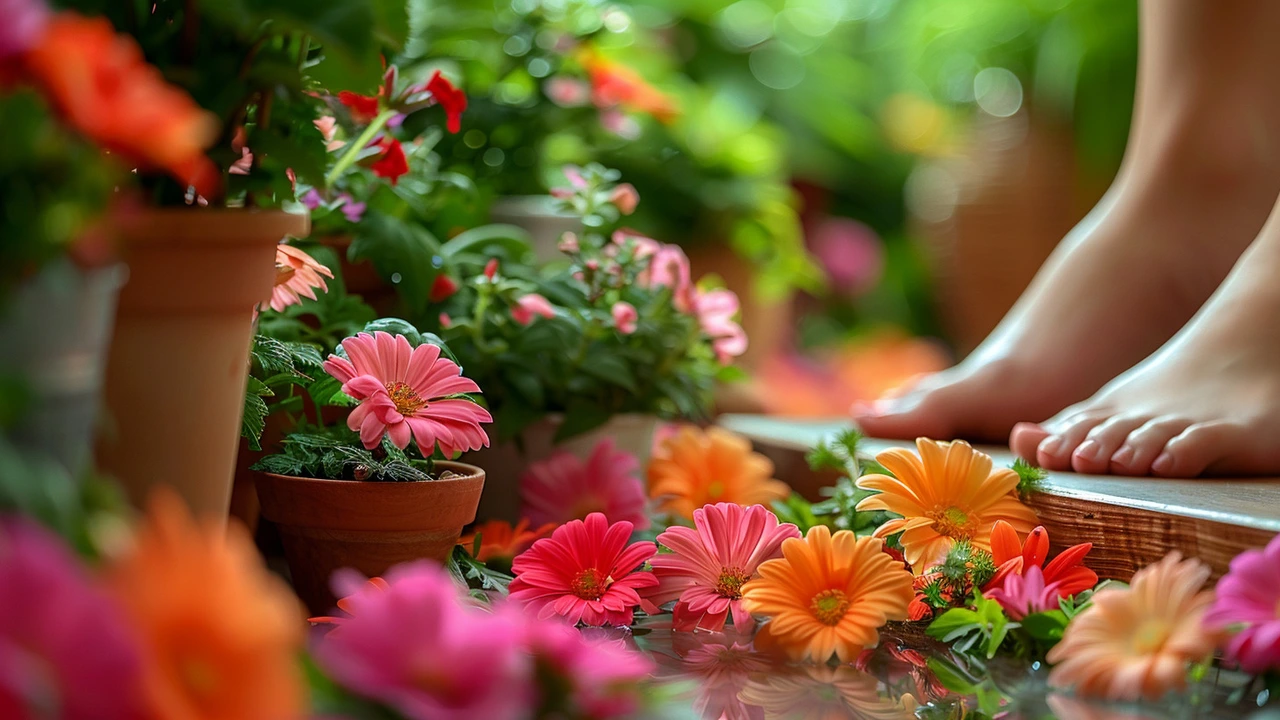
How to Get Started
Embarking on your reflexology journey can feel a bit daunting at first, but it’s quite manageable once you understand the basic principles and have the right tools at hand. The first thing you’d want to do is familiarize yourself with the reflexology chart. This chart is a map of the reflex points on your feet, hands, and ears that correspond to various organs and systems in your body. By learning which pressure points relate to which body parts, you can start applying targeted pressure to these areas to address your specific health concerns.
Before diving in, it’s important to set the right environment for practicing reflexology. Find a quiet, comfortable space where you won't be interrupted. Make sure you're seated in a manner that allows easy access to your feet. Gather any tools you might need, such as a reflexology stick, massage oil, or lotion. These tools can help you apply the necessary pressure more effectively without straining your hands.
Now, let’s talk technique. Begin by warming up your feet with some gentle stretches to increase flexibility and blood flow. Once your feet are relaxed, start applying pressure to the reflex points using your thumb, fingers, or a reflexology stick. Start with gentle pressure and gradually increase intensity as your feet get accustomed to the sensation. Hold each point for a few seconds before moving on to the next. Be mindful of your body's response and adjust your technique as needed. Reflexology is all about listening to your body.
If you’re unsure about your technique, taking a class can be incredibly beneficial. Numerous online and in-person courses are available that can guide you through the process, helping you understand the nuances of reflexology. These courses often provide in-depth knowledge of the reflex points, techniques, and tools, giving you a solid foundation to build on.
For those who prefer learning from books, there are plenty of well-regarded reflexology books available. Titles like “The Complete Guide to Reflexology” can offer comprehensive insights and step-by-step instructions. Many of these books come with detailed illustrations and instructions on how to apply pressure correctly.
Consulting a Professional
If you’re not comfortable starting on your own, consult with a professional reflexologist. These experts are trained to understand and manipulate the pressure points effectively. A professional session can provide immediate relief and give you a model to emulate in your own practices. Regular sessions with a professional can also be beneficial in managing chronic issues and maintaining overall health.
Keeping Consistent
Consistency is key when it comes to reaping the benefits of reflexology. Make it a regular part of your routine, whether it’s once a week or a few times a month. Track your progress in a journal, noting how you feel before and after sessions. This way, you can identify what works best for you and adjust accordingly. You might be surprised at how much difference a few minutes of targeted pressure can make in your overall well-being.
Remember, reflexology is not a quick fix but a journey towards better health. Stay patient, stay consistent, and most importantly, listen to your body. With time and practice, you’ll find yourself more attuned to your body’s needs, paving the way for a healthier, more balanced life.

